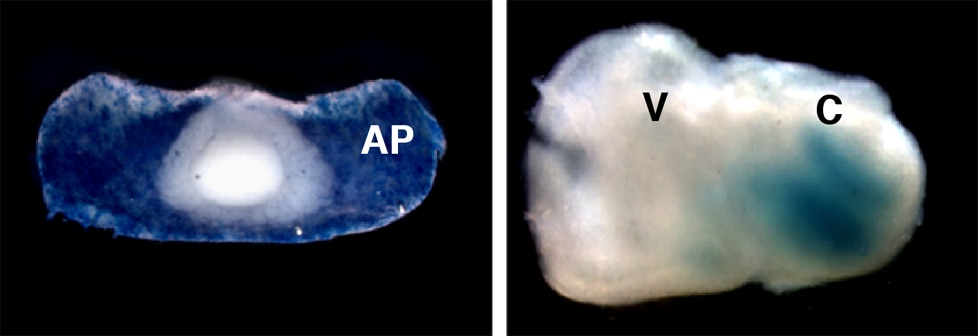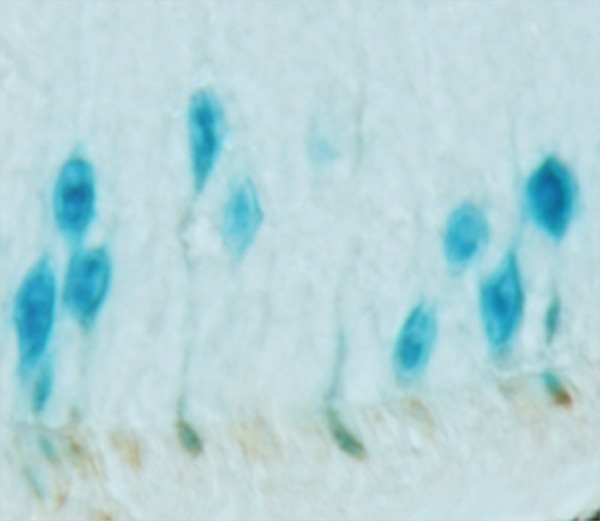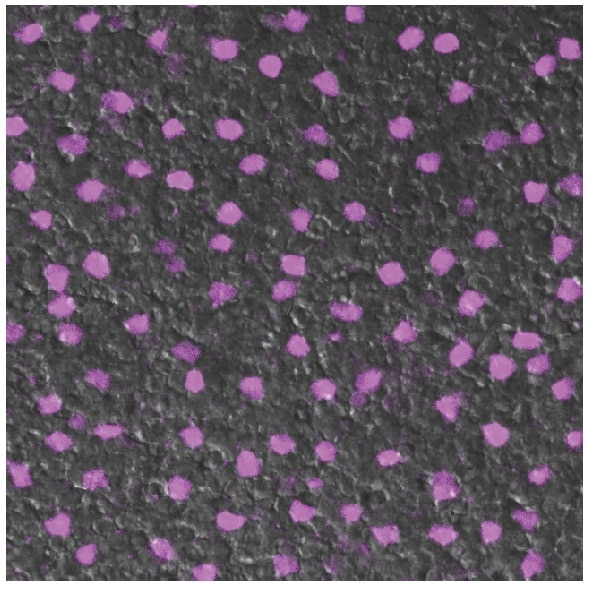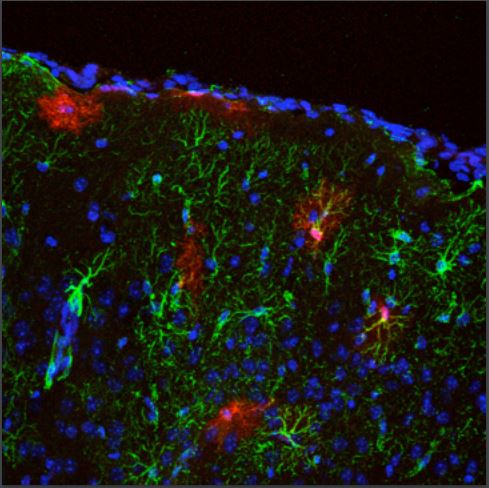Douglas Forrest, Ph.D.

Professional Experience
- Senior Investigator, NIDDK, NIH, 2004
- Associate Professor, Mount Sinai School of Medicine, Department of Human Genetics, 1995–2004
- Ph.D., Glasgow University, 1987
- Endocrine Society
- American Thyroid Association
Research Goal
Thyroid hormone has numerous functions both in development and in homeostasis, the body’s ability to maintain internal stability. Although thyroid hormone is known to elicit powerful responses in the body, we do not fully understand how this happens or how disease arises when these controls become faulty. It is therefore necessary to elucidate the mechanisms by which thyroid hormone elicits its cell-specific actions as a prerequisite to understanding the basis of thyroid disorders. Ultimately, this knowledge may aid in the design of improved treatments for thyroid disease.
Current Research
Thyroid hormone controls diverse functions both in development and in adult homeostasis. In humans, congenital thyroid hormone abnormalities may result in neurodevelopmental and physical retardation, whereas abnormalities in adulthood result in a range of other forms of impairment. Using genetic approaches in mammalian models, we aim to elucidate the mechanisms that regulate where, when, and how thyroid hormone acts and to uncover new functions for this hormone.
Thyroid hormone receptors are nuclear receptors that act as ligand-regulated transcription factors and control a critical point at which the hormonal signal is converted into a cellular response. We investigate how these receptors mediate functions in the endocrine system, nervous system, and other systems of the body. We also investigate other factors that determine cellular responses to thyroid hormone, including the deiodinase enzymes that control the availability of active thyroid hormone within tissues. Evidence indicates that deiodinases cooperate closely with thyroid hormone receptors to exert powerful control over tissue responses.
Our studies include investigation of thyroid hormone receptors in sensory development, including in the auditory and visual systems. We identified a specific receptor isoform in the retina, which proved to be unexpectedly critical for the development of the light-sensitive photoreceptors that mediate vision. Genetic studies indicated that this receptor, encoded by the THRB gene, serves a unique role in generating the cone photoreceptor diversity that underlies color visual function. Moreover, this receptor contributes to the death or survival of cone photoreceptors, suggesting a key role for thyroid hormone throughout the life history of these specialized light-sensitive neurons.
We also investigate other nuclear receptors in mammalian development, including retinoid-related orphan receptors. The study of nuclear receptors, which act as ligand-regulated transcription factors, should reveal how networks of transcriptional responses mediate specific biological processes.
Applying our Research
Thyroid diseases are common in the human population. For example, impaired thyroid function occurs in about one in 2,500 newborns and can result in mental and physical retardation. In adults, impaired thyroid function can produce a range of other types of symptoms (for example, in metabolism and cardiac function). Mutations in human thyroid hormone receptor genes are associated with syndromes of resistance to thyroid hormone. Although thyroid hormone is known to control powerful responses in the body, we do not understand fully how this happens, or how disease arises when these controls become faulty. Research to uncover how thyroid hormone controls the development of different tissues and subsequently how this hormone maintains normal function throughout adult life is therefore necessary for understanding the basis of thyroid disease. Ultimately, such knowledge may aid in the design of improved treatment of disease.
Select Publications
- Cone photoreceptor differentiation regulated by thyroid hormone transporter MCT8 in the retinal pigment epithelium.
- Liu Y, Ng L, Liu H, Heuer H, Forrest D.
- Proc Natl Acad Sci U S A (2024 Jul 23) 121:e2402560121. Abstract/Full Text
- Thyroid hormone-regulated chromatin landscape and transcriptional sensitivity of the pituitary gland.
- Cho YW, Fu Y, Huang CJ, Wu X, Ng L, Kelley KA, Vella KR, Berg AH, Hollenberg AN, Liu H, Forrest D.
- Commun Biol (2023 Dec 11) 6:1253. Abstract/Full Text
Research in Plain Language
Thyroid hormone has numerous functions both in development and in adult homeostasis, the body’s ability to maintain internal stability. In humans, thyroid hormone abnormalities in development cause mental and physical retardation, whereas abnormalities in adulthood may lead to other forms of impairment (for example, in metabolism and in cardiac function). Although thyroid hormone is known to produce powerful responses in the body, we do not fully understand how this happens. We use genetic approaches to investigate where, when, and how thyroid hormone acts in the body. We also seek to uncover new functions for this hormone that are not yet known.
Thyroid hormone receptors are proteins in the cell nucleus that control how thyroid hormone produces a response. When thyroid hormone binds to the receptor, this triggers a change in the receptor, which allows it to switch on or off specific genes in the nucleus. Questions we address in our research include the following:
- How do thyroid hormone receptors mediate critical functions in different tissues?
- What is the role of deiodinase enzymes that control the availability of thyroid hormone in tissues?
- What role do other types of nuclear receptors, including retinoid-related orphan receptors, play in development in mammals?
Research Images





